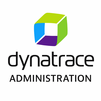
ServiceNow Admin course covers the core functionalities and administrative aspects of ServiceNow. Participants will learn to configure and manage the platform, including user administration, security, data management, and application customization. The course includes hands-on labs and real-world scenarios to ensure practical understanding. Ideal for aspiring ServiceNow administrators, this training prepares you for certification and equips you with the skills needed to effectively manage and optimize your organization's ServiceNow instance.
ServiceNow Admin Interview Questions Answers - For Intermediate
1. What is a Transform Map in ServiceNow, and how is it used?
A Transform Map in ServiceNow is a tool used to map data from an import set to a target table. It defines the relationships between the fields in the source data and the fields in the target table. Transform Maps are used during data import processes to ensure that data is accurately and consistently transferred into the ServiceNow platform. They support various transformation options, such as data cleansing, lookup, and scripting, to handle complex data mapping requirements.
2. How does the Email Notification system work in ServiceNow?
The Email Notification system in ServiceNow allows you to send email alerts and updates based on specific conditions and events. Notifications are configured with conditions that trigger them, such as record insertions, updates, or deletions. You can define the recipients, subject, and message content, including dynamic placeholders for record data. Email templates and notification rules help standardize and automate communication, ensuring that stakeholders are informed of important events and changes within the platform.
3. What is a Scheduled Job in ServiceNow, and how do you create one?
A Scheduled Job in ServiceNow is a background task that runs at specified intervals or times to perform automated actions. To create a Scheduled Job, navigate to the Scheduled Jobs module and click "New." Define the job properties, such as name, schedule, and script. The script defines the actions to be performed by the job, such as updating records, sending notifications, or running reports. Scheduled Jobs help automate repetitive tasks and ensure timely execution of important processes.
4. How do you handle data import in ServiceNow?
Data import in ServiceNow involves using Import Sets and Transform Maps to bring external data into the platform. The process starts with creating an Import Set, which serves as a staging table for the incoming data. The data is then mapped to target tables using Transform Maps, which define the relationships between source and target fields. The Transform Maps also support data transformation and validation to ensure data quality. Import Sets can be scheduled or triggered manually, depending on the use case.
5. What is the purpose of ServiceNow's IntegrationHub?
ServiceNow's IntegrationHub is a framework that allows you to build and manage integrations with external systems. It provides a set of reusable integration components, such as spokes, actions, and connectors, that simplify the process of connecting ServiceNow with other applications and services. IntegrationHub supports various protocols and standards, such as REST, SOAP, and JDBC, enabling seamless data exchange and automation across different platforms. It helps extend the capabilities of ServiceNow and streamline business processes.
6. Can you explain the concept of Data Policy in ServiceNow?
A Data Policy in ServiceNow is a rule that enforces data integrity by setting mandatory and read-only states for fields on a record. Unlike UI Policies, which are client-side and apply to forms, Data Policies are server-side and apply to all data operations, including API calls and background scripts. Data Policies ensure that data conforms to business rules and standards, regardless of how it is entered or modified. They help maintain consistency and accuracy across the platform.
7. What are the different types of scripts in ServiceNow?
ServiceNow supports various types of scripts, including:
- Client Scripts: Run on the client side and manage the behavior of forms and fields.
- Business Rules: Server-side scripts that run on record operations (insert, update, delete, query).
- UI Actions: Scripts triggered by user interactions with UI elements, such as buttons or links.
- Script Includes Reusable server-side scripts that can be called from other scripts.
- Workflow Scripts: Scripts that run within workflows to control process logic.
Each script type serves a specific purpose and is used to extend and customize the platform's functionality.
8. How do you configure a ServiceNow Update Set?
An Update Set in ServiceNow is a container for grouping configuration changes that can be moved between instances. To configure an Update Set, navigate to the Update Sets module and create a new Update Set. Ensure the Update Set is marked as "Current" so that changes are captured. As you make changes in the instance, they are added to the Update Set. Once complete, you can export the Update Set as an XML file and import it into another instance for deployment. This process helps manage and track configuration changes across environments.
9. What is a GlideAggregate in ServiceNow, and how is it used?
GlideAggregate is a ServiceNow API that allows you to perform aggregate queries, such as COUNT, SUM, AVG, MIN, and MAX, on database tables. It is used to retrieve summary data and statistics without retrieving the individual records. For example, you can use GlideAggregate to count the number of incidents by priority or calculate the average resolution time. It helps generate reports and dashboards that provide insights into data trends and metrics.
10. Explain the use of the ServiceNow Service Portal.
The ServiceNow Service Portal is a customizable front-end interface that provides a user-friendly way for users to interact with the platform. It allows users to submit requests, search for knowledge articles, and access service catalogs through a modern web interface. The Service Portal is built using AngularJS and ServiceNow’s widget framework, allowing for extensive customization and branding. It enhances user experience and accessibility, making it easier for users to engage with IT services and resources.
11. What is the purpose of ServiceNow's Knowledge Management module?
ServiceNow's Knowledge Management module is designed to capture, store, and share knowledge within an organization. It provides a centralized repository for knowledge articles, such as how-to guides, FAQs, and troubleshooting steps. The module includes features for creating, categorizing, and publishing articles, as well as managing article versions and feedback. Knowledge Management helps improve service delivery by enabling users to find solutions quickly and reduces the workload on support teams by promoting self-service.
12. How do you implement Access Control Rules in ServiceNow?
Access Control Rules in ServiceNow are configured to manage permissions for accessing data and performing operations on records. To implement Access Control Rules, navigate to the Access Control module and create a new rule. Define the table, operation (create, read, update, delete), and conditions for the rule. You can use scripts to further refine the conditions based on user roles, group memberships, or other criteria. Access Control Rules help enforce security policies and ensure that users have appropriate access to data.
13. What is a Scripted REST API in ServiceNow?
A Scripted REST API in ServiceNow allows you to create custom RESTful web services using JavaScript. It provides a way to define custom endpoints, request methods, and processing logic for interacting with ServiceNow data and functionality. Scripted REST APIs can be used to expose ServiceNow services to external applications or integrate with other systems. They offer flexibility in designing APIs that meet specific business requirements and support advanced use cases.
14. How does ServiceNow handle reporting and analytics?
ServiceNow provides robust reporting and analytics capabilities through its Reporting module and Performance Analytics. The Reporting module allows users to create and customize reports using various data sources, chart types, and filters. Performance Analytics extends these capabilities with advanced features like scorecards, indicators, and dashboards. It enables organizations to track key performance metrics, analyze trends, and make data-driven decisions. Both tools help visualize data and provide insights into IT operations and service delivery.
15. What is the purpose of the Event Management module in ServiceNow?
The Event Management module in ServiceNow helps monitor the health of IT services and infrastructure by collecting and processing events from various sources. It uses connectors to integrate with monitoring tools and gather event data. Event Management applies rules and filters to identify and prioritize significant events, correlates them with existing incidents and changes, and generates alerts. This module helps proactively manage IT issues, reduce downtime, and improve service availability by enabling timely responses to critical events.
ServiceNow Admin Interview Questions Answers - For Advanced
1. What is the purpose of ServiceNow Orchestration?
ServiceNow Orchestration is a module that automates complex IT and business processes across multiple systems and applications. It extends the capabilities of ServiceNow workflows by integrating with external systems through APIs, scripts, and connectors. Orchestration enables tasks such as user provisioning, incident remediation, and system monitoring to be automated, reducing manual effort and improving efficiency. It supports seamless coordination of activities across different platforms, ensuring consistent and reliable process execution.
2. Describe the process of creating a Custom Application in ServiceNow.
Creating a Custom Application in ServiceNow involves several steps: defining the application's scope, creating tables and fields, designing the user interface, and developing business logic. Developers use ServiceNow Studio to build and manage custom applications, utilizing tools like Form Designer, List Designer, and Flow Designer. Application files, such as scripts, workflows, and UI components, are created and organized within the application scope. Testing and debugging ensure the application's functionality and performance before deployment.
3. How do you handle ServiceNow upgrades?
ServiceNow upgrades are managed through the ServiceNow HI Service Portal, which provides tools for planning, scheduling, and executing upgrades. Administrators can review release notes, identify impacted customizations, and test the new version in a sub-production instance. The upgrade process includes running the Upgrade Preview, resolving conflicts, and performing regression testing. Post-upgrade tasks ensure that all customizations and integrations are functioning correctly. ServiceNow's regular release cycle ensures continuous improvement and innovation.
4. What is the use of Application Portfolio Management (APM) in ServiceNow?
Application Portfolio Management (APM) in ServiceNow helps organizations manage and optimize their application portfolios. APM provides a framework for assessing the value, cost, and risk of applications, enabling data-driven decisions on application rationalization, investment, and retirement. It includes tools for application inventory, assessment, and reporting, supporting strategic planning and alignment with business objectives. APM enhances visibility into application performance, utilization, and lifecycle, driving efficiency and cost savings.
5. How do you implement Change Management in ServiceNow?
Change Management in ServiceNow is implemented using workflows, approval processes, and change models. The module includes features for creating, assessing, approving, and implementing changes to IT services and infrastructure. Change Requests are categorized into standard, normal, and emergency changes, each following specific workflows and approval paths. Risk assessments, impact analysis, and post-implementation reviews ensure that changes are managed effectively, minimizing disruption and ensuring compliance with organizational policies.
6. What are the benefits of using ServiceNow Virtual Agent?
ServiceNow Virtual Agent is an AI-powered chatbot that provides automated, conversational support to users. It helps reduce the workload on service desks by handling routine inquiries, performing common tasks, and guiding users through troubleshooting steps. Virtual Agent integrates with ServiceNow applications and external systems, enhancing user experience with 24/7 support. It supports natural language processing (NLP) for understanding user intents and provides personalized responses, improving efficiency and user satisfaction.
7. Explain the concept of Knowledge Management in ServiceNow.
Knowledge Management in ServiceNow is a module that enables organizations to capture, share, and manage knowledge effectively. It includes features for creating, categorizing, reviewing, and publishing knowledge articles. Knowledge Bases store information on various topics, providing users with easy access to solutions and best practices. Knowledge Management supports self-service, reduces incident resolution times, and ensures consistency in information dissemination. It enhances organizational learning and improves service delivery by leveraging collective knowledge.
8. How do you use the ServiceNow MID Server?
The ServiceNow MID (Management, Instrumentation, and Discovery) Server is a lightweight Java application that facilitates communication between the ServiceNow instance and external systems. It is used for Discovery, Orchestration, and other integrations, enabling secure data collection and execution of automation tasks. The MID Server runs behind the firewall, ensuring compliance with security policies. It supports multiple use cases, such as infrastructure discovery, monitoring, and integration with third-party systems, enhancing ServiceNow's capabilities.
9. What is the purpose of ServiceNow IT Operations Management (ITOM)?
ServiceNow IT Operations Management (ITOM) is a suite of applications designed to manage and optimize IT infrastructure and services. ITOM includes modules for Discovery, Service Mapping, Event Management, and Cloud Management. It provides visibility into IT assets, dependencies, and health, enabling proactive management of infrastructure and services. ITOM helps organizations reduce downtime, improve performance, and optimize resource utilization, supporting efficient and reliable IT operations.
10. How do you customize the ServiceNow Service Portal?
Customizing the ServiceNow Service Portal involves configuring widgets, themes, pages, and scripts to meet specific requirements. The Service Portal Designer provides a drag-and-drop interface for creating and arranging portal components. Developers can create custom widgets using HTML, CSS, and AngularJS, and extend portal functionality with client-side and server-side scripts. Themes and branding elements ensure the portal aligns with organizational identity. Testing and iterative development ensure a user-friendly and functional service portal.
11. Describe the use of ServiceNow Performance Analytics.
ServiceNow Performance Analytics is a module that provides real-time and historical insights into process performance and key metrics. It includes features for creating dashboards, scorecards, and reports, enabling data-driven decision-making. Performance Analytics supports KPI tracking, trend analysis, and benchmarking, helping organizations identify areas for improvement and measure progress. It integrates with various ServiceNow applications, providing a comprehensive view of performance across IT and business services, and driving continuous improvement.
12. What is the purpose of ServiceNow Discovery?
ServiceNow Discovery is a module that identifies and maps IT infrastructure components, such as servers, applications, and network devices, within an organization. It collects configuration data and populates the CMDB, providing an accurate and up-to-date inventory of IT assets. Discovery supports dependency mapping, impact analysis, and change management by visualizing relationships between CIs. It enhances visibility, reduces manual effort, and ensures data accuracy, supporting efficient IT operations and service management.
13. How do you manage scripts in ServiceNow?
Managing scripts in ServiceNow involves organizing, writing, and maintaining server-side and client-side scripts. Scripts are used to extend and customize platform functionality, including Business Rules, Script Includes, UI Actions, and Client Scripts. Best practices for script management include modularizing code, using comments and documentation, adhering to naming conventions, and version control. Testing and debugging tools, such as Script Debugger and Log Viewer, help ensure script quality and reliability, supporting efficient development and maintenance.
14. Explain the use of ServiceNow Agent Workspace.
ServiceNow Agent Workspace is a unified interface designed for service agents to manage and resolve tasks efficiently. It provides a consolidated view of cases, incidents, and tasks, along with contextual information and actionable insights. Agent Workspace includes features like agent assist, task routing, and real-time collaboration, enhancing productivity and decision-making. It supports multi-channel interactions, enabling agents to handle requests from various sources seamlessly, improving service quality and customer satisfaction.
15. What are the key considerations for implementing ServiceNow IT Asset Management (ITAM)?
Implementing ServiceNow IT Asset Management (ITAM) involves several key considerations, including asset lifecycle management, data accuracy, and compliance. ITAM includes modules for hardware and software asset management, enabling organizations to track and manage assets from procurement to retirement. Key considerations include defining asset management processes, integrating with procurement and inventory systems, and ensuring data accuracy through regular audits. ITAM helps optimize asset utilization, reduce costs, and ensure compliance with licensing and regulatory requirements.
Course Schedule
| Dec, 2025 | Weekdays | Mon-Fri | Enquire Now |
| Weekend | Sat-Sun | Enquire Now | |
| Jan, 2026 | Weekdays | Mon-Fri | Enquire Now |
| Weekend | Sat-Sun | Enquire Now |
Related Courses
Related Articles
Related Interview
- AZ-104: Microsoft Azure Administrator Interview Questions Answers
- Microsoft 365 Copilot for Adaptive Manager Training Interview Questions Answers
- AVEVA Global Training Interview Questions Answers
- Primavera P6 Training Interview Questions Answers
- Autodesk Robot Structural Analysis Interview Questions Answers
Related FAQ's
- Instructor-led Live Online Interactive Training
- Project Based Customized Learning
- Fast Track Training Program
- Self-paced learning
- In one-on-one training, you have the flexibility to choose the days, timings, and duration according to your preferences.
- We create a personalized training calendar based on your chosen schedule.
- Complete Live Online Interactive Training of the Course
- After Training Recorded Videos
- Session-wise Learning Material and notes for lifetime
- Practical & Assignments exercises
- Global Course Completion Certificate
- 24x7 after Training Support












 Join our Live Instructor-Led online classes delivered by industry experts
Join our Live Instructor-Led online classes delivered by industry experts